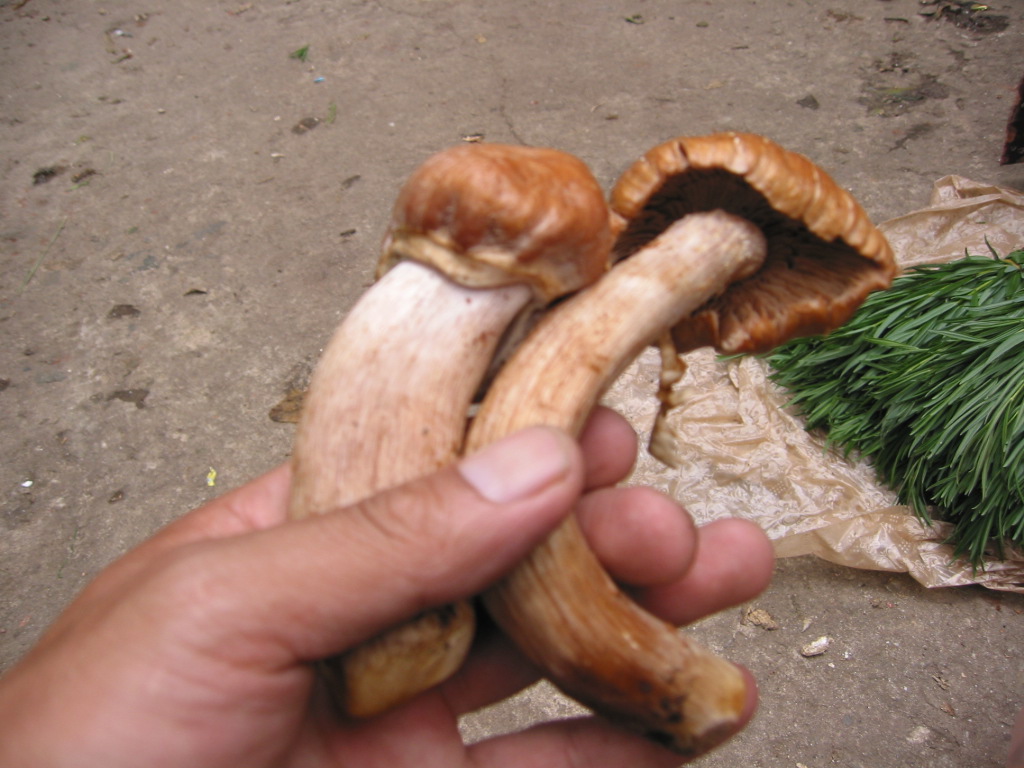
Local name: Dhungshing Shamong
Edibility: Edible
Habitat: Terrestrial and solitary togregarious.
Description: Cap: 5-10 cm in diameter, convex and becomes flat or somewhat bell-shaped as it matures, dry, usually wrinkled when young with a greyish to whitish coating of fibers, light brownish to purplish at first, but soon brownish, often with a paler margin. Hymenophore: Gills attached to the stem, close, pale at first, becoming brown or cinnamon brown. Stem: 5-13 cm tall and up to 4 cm thick at the apex, equal or slightly swollen at the base, dry, usually rough or shaggy near the apex, whitish or pale tan. Flesh: Whitish- greyish, or pale lilac. Spore Print: Rusty brown.
Comments: It is another abundantly collected edible mushroom sold in local market in Bhutan. It is similar to it’s close friend Rozites emodensis when both are mature and they are harmless but care should be taken not to confuse with some of other brown Cortinarius species.


